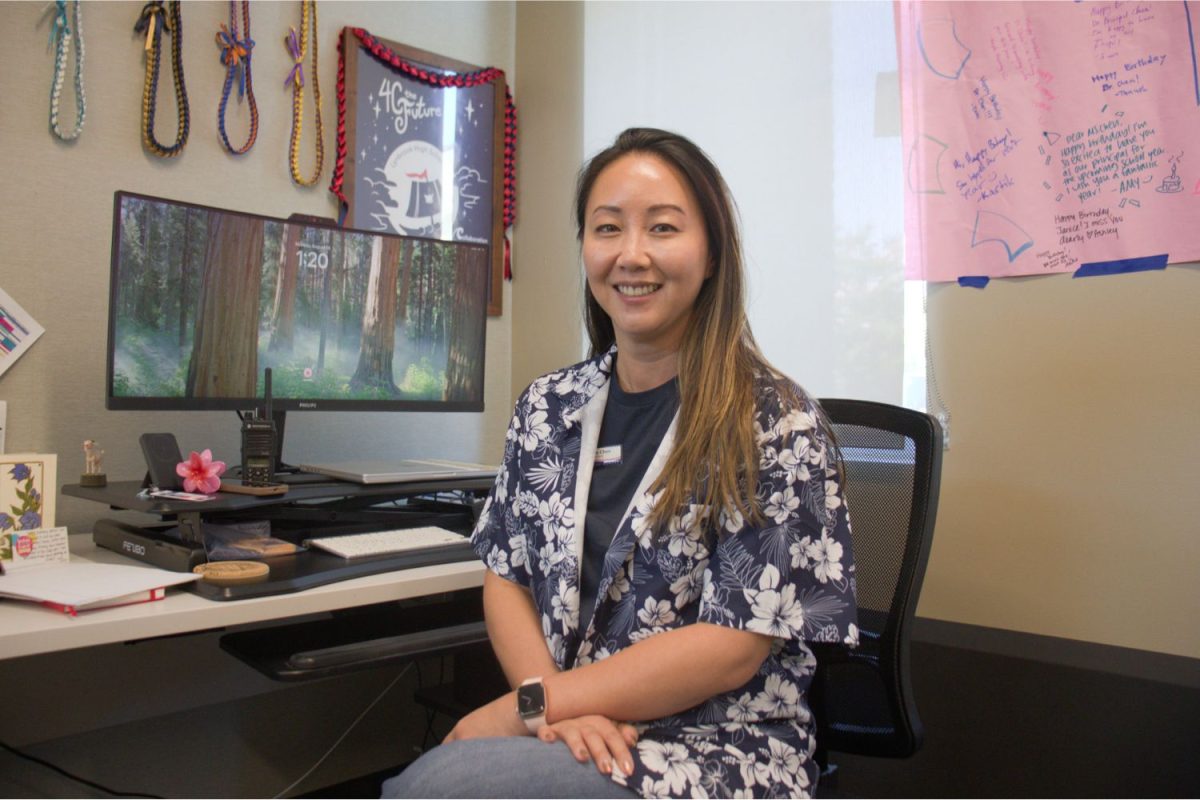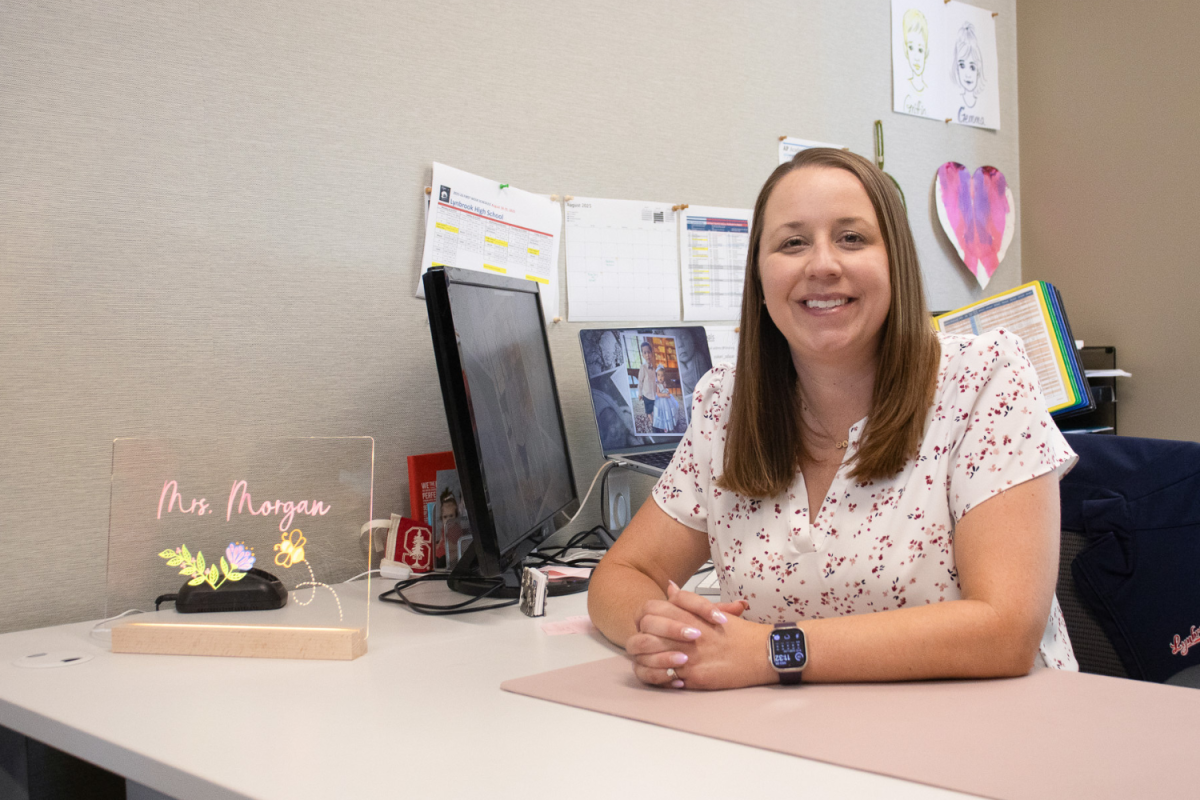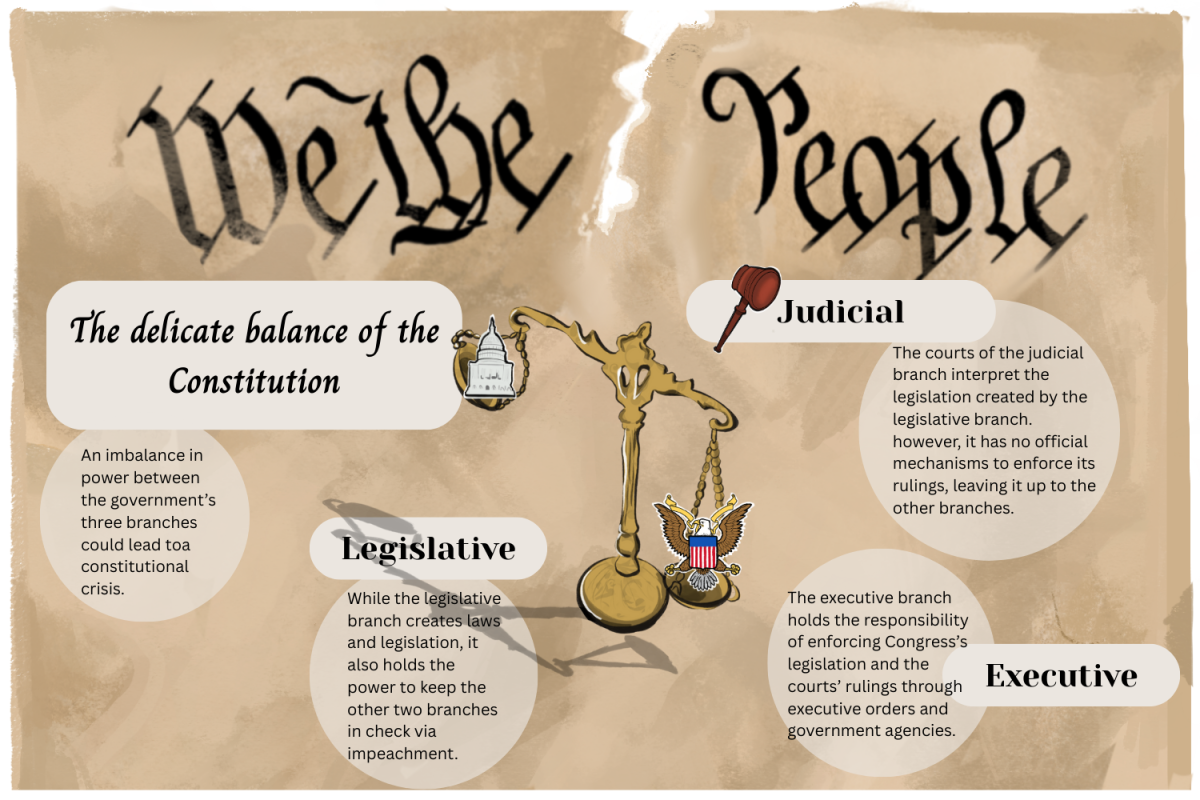As the rest of the class finishes their projects, students around the classroom instinctively reach for their phones, creating a distraction for themselves and other students attempting to focus on the task at hand. Moments like this in the classroom have fueled debate around appropriate cell phone use in schools.
Currently, Lynbrook does not have a school-wide policy to mandate cell phone restrictions for all classes, but with the passage of the Phone-Free Schools Act by Gov. Gavin Newsom, this could change. The bill, signed into law on Sept. 23, 2024, requires schools to institute a policy limiting the use of cell phones throughout the school day by July 2026, bringing urgency to the conversation of how such a policy should be implemented. To best fit the academic environment at Lynbrook, the policy should balance restriction and flexibility, helping students improve their focus in the classroom while still providing access to cell phones when necessary for educational use.
Some school districts have already taken the initiative to regulate phone use, such as the Los Angeles Unified School District, the largest nationwide district to ban cell phones. In FUHSD, specifically at Lynbrook, teachers are free to choose and enforce their boundaries regarding phone use in their classrooms.
Since this bill is fairly new, Lynbrook does not yet have a set plan for how it is going to be implemented. According to Principal Maria Jackson, the district will eventually establish a policy framework for all of its schools. Until then, teachers and staff should encourage students to pay attention in class and to only use electronic devices responsibly and when needed.
“This act would be great because most teachers dislike being the bad guy,” physics teacher David Taylor said. “A blanket rule would make it much easier since the phone is a huge distraction for students.”
For many, cell phones permeate their lives: from storing important contacts to housing their favorite games. With so much available at students’ fingertips, it is challenging to stop technology overuse. According to a 2023 study by the Pew Research Center, around 72% of high school teachers view cell phones as the main distractor in the classroom. By keeping cell phones out of students’ reach during instruction, teachers can more efficiently maintain a focused learning environment in which their students can thrive while implementing technology to further their education.
“In the past, students used to love watching movies in class,” language arts teacher Connie Willson said. “Now, some of them struggle to pay attention to a movie because it’s a long, sustained period of time. Also, just being able to focus on tasks is a struggle.”
Some of the main distractions that students struggle with are Instagram and Brawl Stars, an online multiplayer game. The addictive nature of both apps makes it easy for students to lose focus during a lecture or slack off during class, which creates a poor learning environment.
Although the bill does not solve the problem of phone addiction in general, it helps by slowly breaking the habit of reaching for your phone as soon as boredom hits. Overuse of a device causes psychological reliance, according to Butler Hospital. Phones are a source of endless dopamine, and while they can be a relaxing way to wind down at the end of the day, constant reward-seeking prompted by the excess of dopamine is a slippery slope that can quickly lead to addictive behaviors. With a clear policy in place, school districts can become more effective places of learning, teaching students the importance of balance and control when it comes to such matters.
However, one potential drawback of a complete ban in schools is the cutoff of communication. From emergencies to daily pick-ups and drop-offs, clear communication between students and parents is essential for many families. Along with family contact, communication between friends and classmates with different schedules may become tricky with the lack of phones.
“Cell phones have become so ingrained in our way of life that there might be a lot of backlash about having no cell phones at all from both students and parents,” Taylor said. “Best case is students can have it in their backpack during the day and then take it out at the end of the school day.”
When forming Lynbrook’s cell phone policy, it is vital to consider all these factors while also realizing that phones can sometimes be a healthy addition to the classroom if monitored and used responsibly. For example, art students may need a device to display a reference photo conveniently or keep progress of their work over the school year.
“I think that phones can be used educationally,” junior Zenita Yang said. “When I use my phone in class, I’m usually just searching for information I need for classwork or homework.”
Conversely, most classes are taught with minimal phone use. If a teacher chooses to implement tools such as Quizlet Lives and Kahoots, integrating cell phones into the classroom can happen responsibly and in a way that enriches learning rather than distracts students
“I do think that a lot of times, people don’t use their phones for educational purposes,” Yang said. “I think they should be put away when they become a distraction, but it just depends on the class.”
Otherwise, keeping them out of students’ reach is the best way to ensure they receive quality education.
“I have students put their cell phones in the phone holder at the front of the class,” Willson said. “I take attendance based on whose cell phone is there.”
Willson’s policy, which she has enforced for around five years, is beneficial because it keeps phones out of reach from students while making them easily accessible in an emergency. While some students could lie about not having a phone, a district-wide policy should create consequences if students are caught with their phones.
“With my policy, students are more on task,” Willson said. “They interact with each other more, and they don’t pick up their phone every time they hear the buzz of a notification.”
In the end, students must take it upon themselves to ensure they are using their phones responsibly, whether by using them to enhance their learning experience or by keeping them stored in their backpacks during class time. Additionally, FUHSD could take the initiative to not only limit phones, but also educate students through lessons on cell phone addiction and how to stay focused in class. Phones in students’ hands should serve a greater purpose than a means of procrastination and distraction during classes. To achieve this, FUHSD could implement an effective policy for the entire district restricting students’ access to their phones during class time, ensuring students stay on task and are able to prioritize learning.

























































